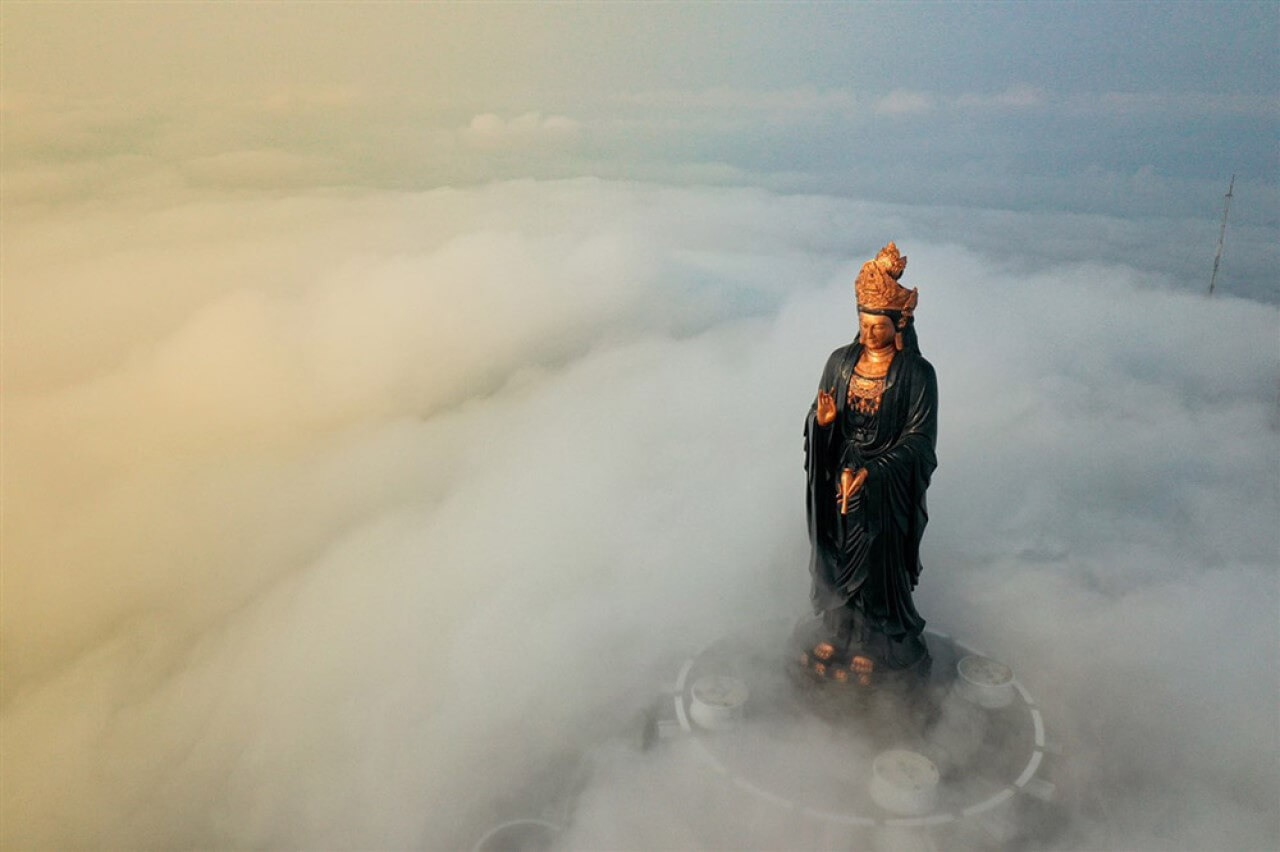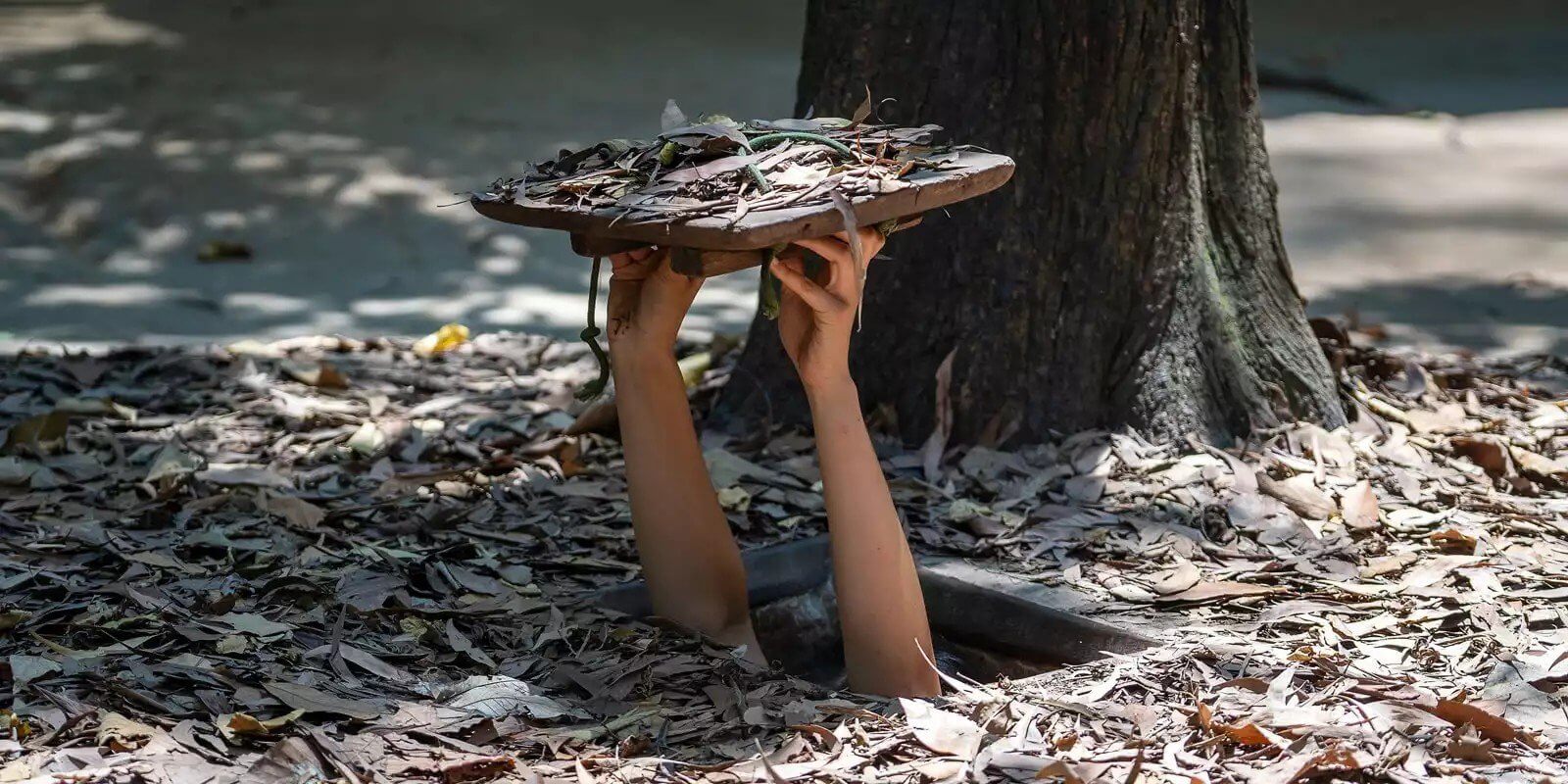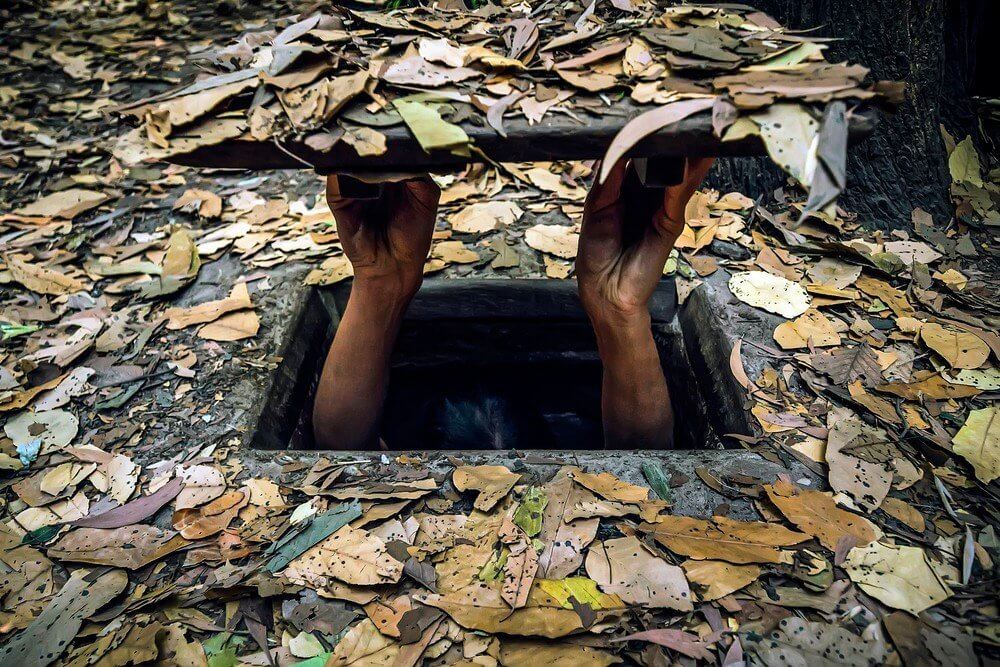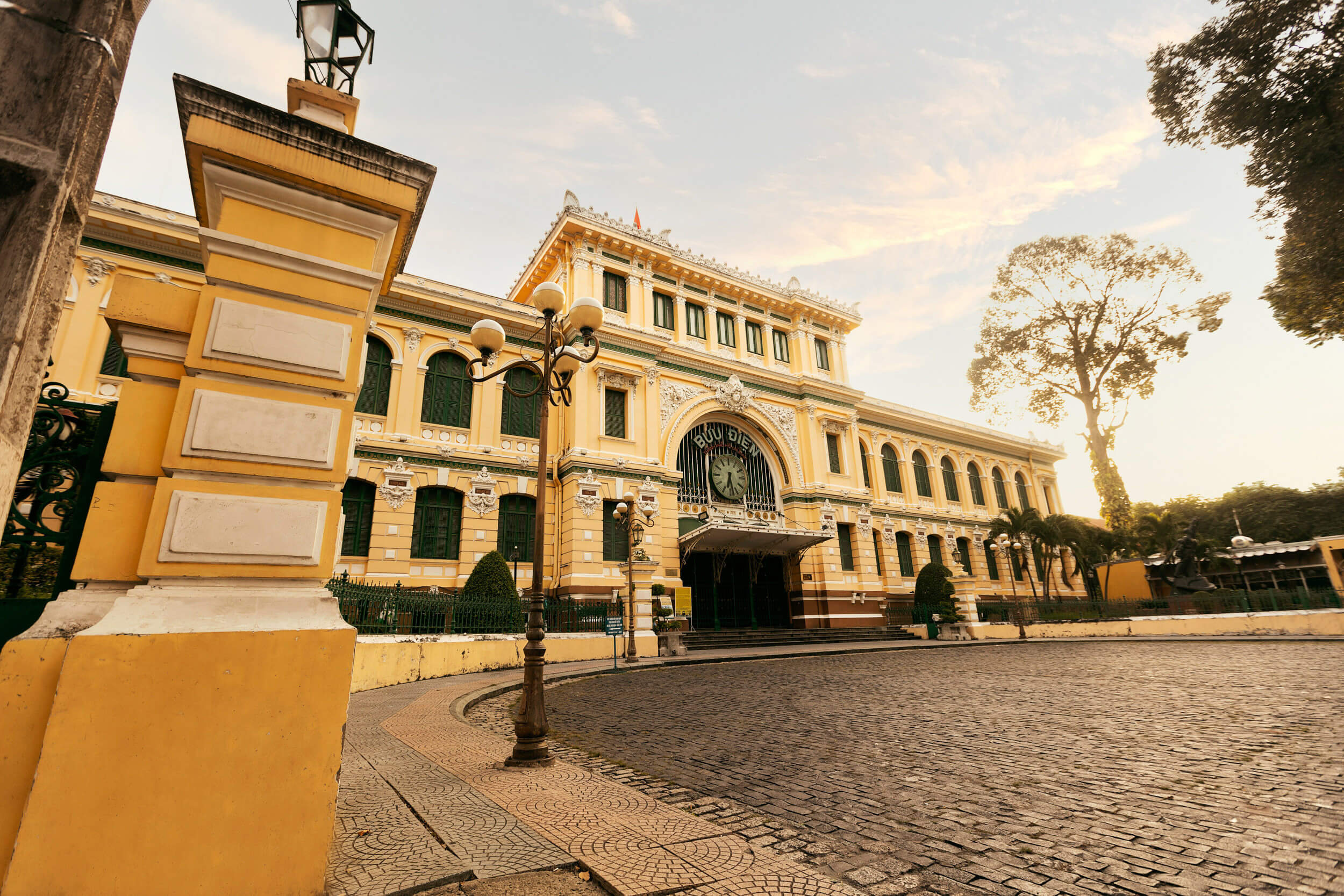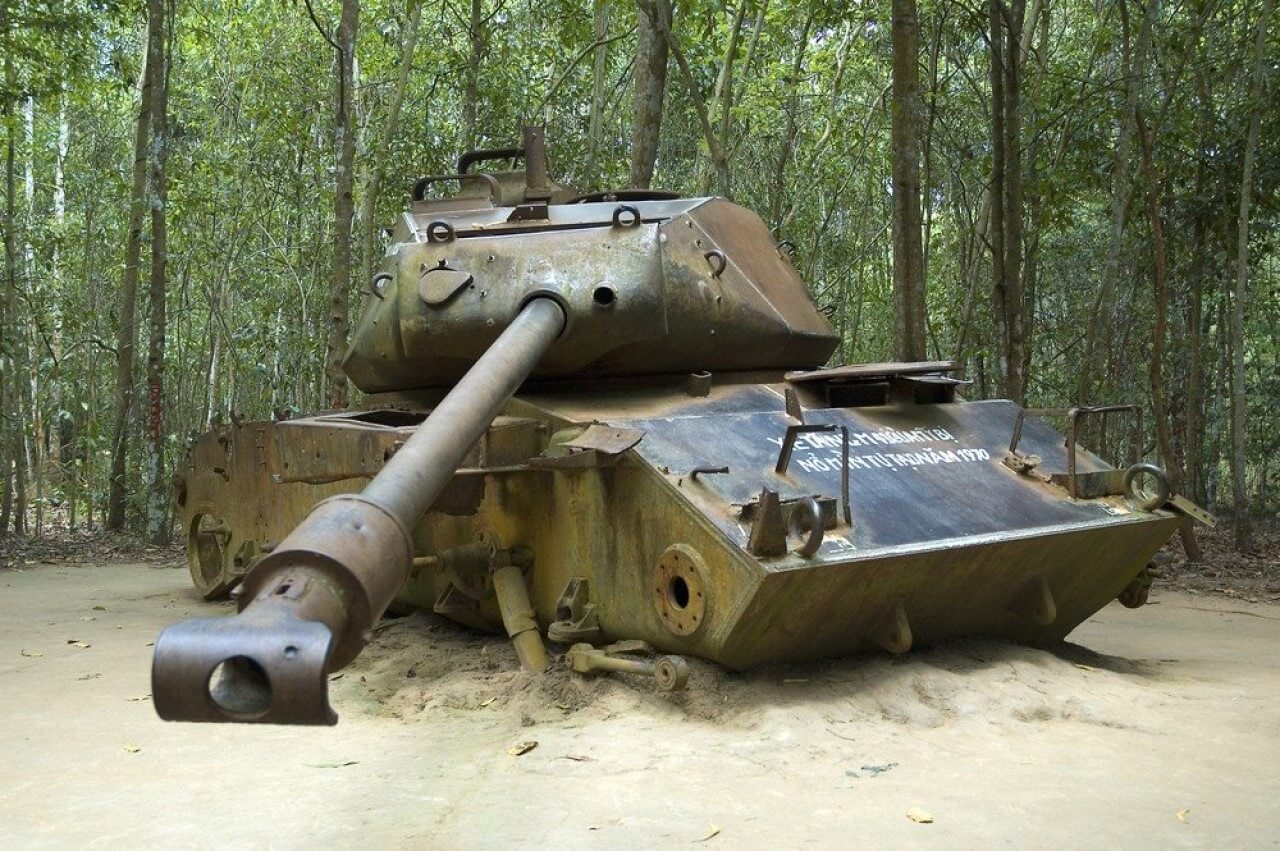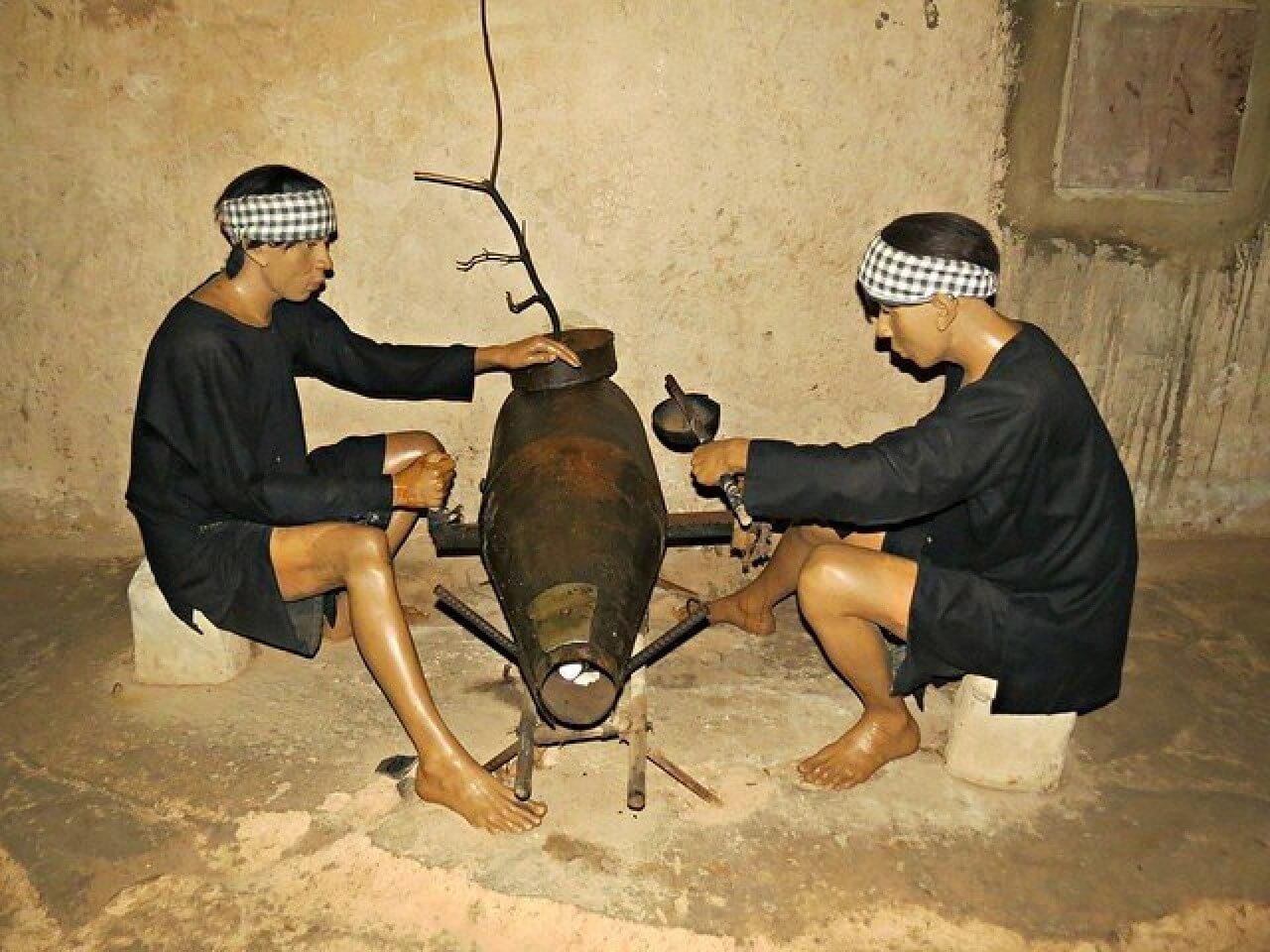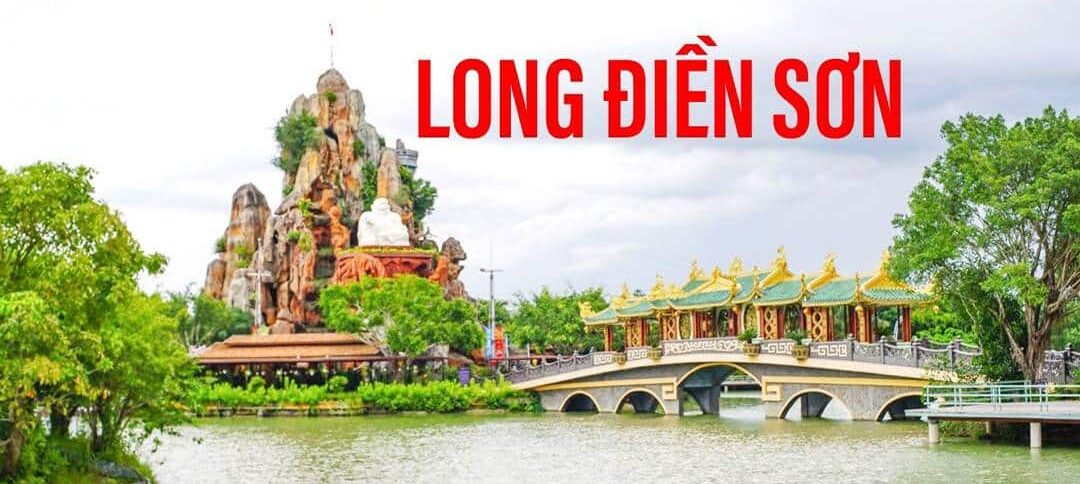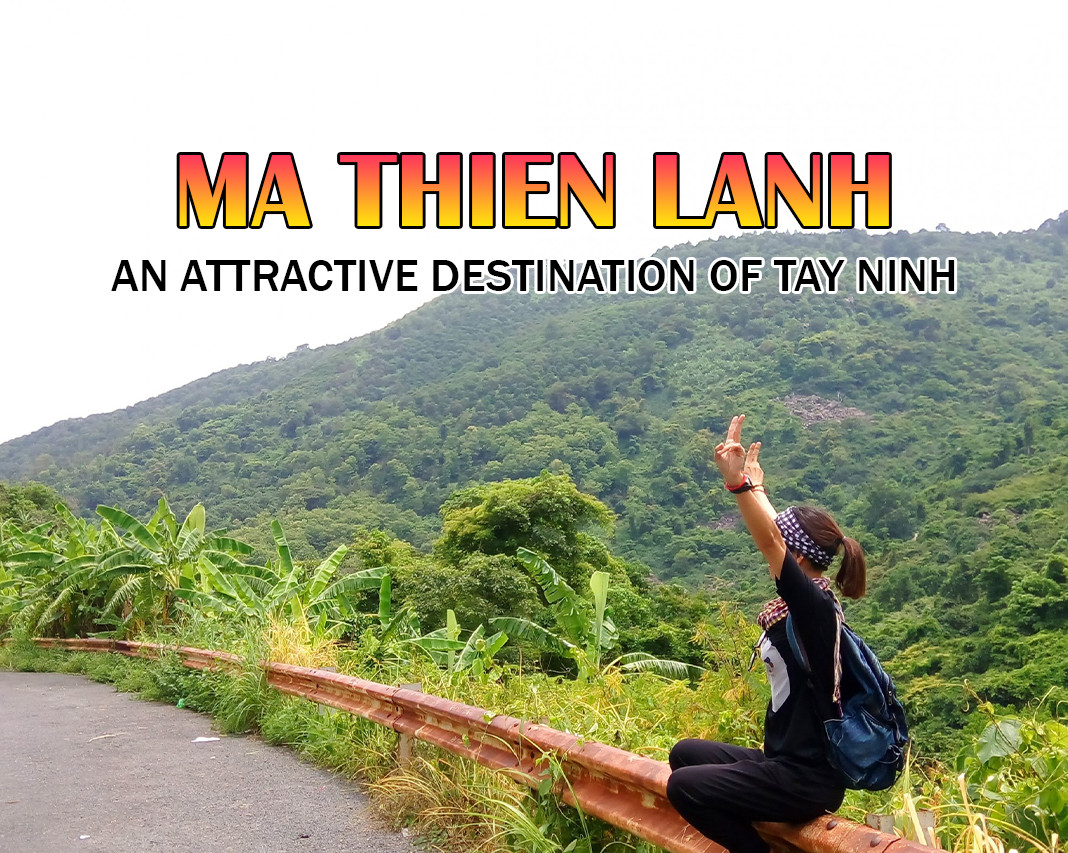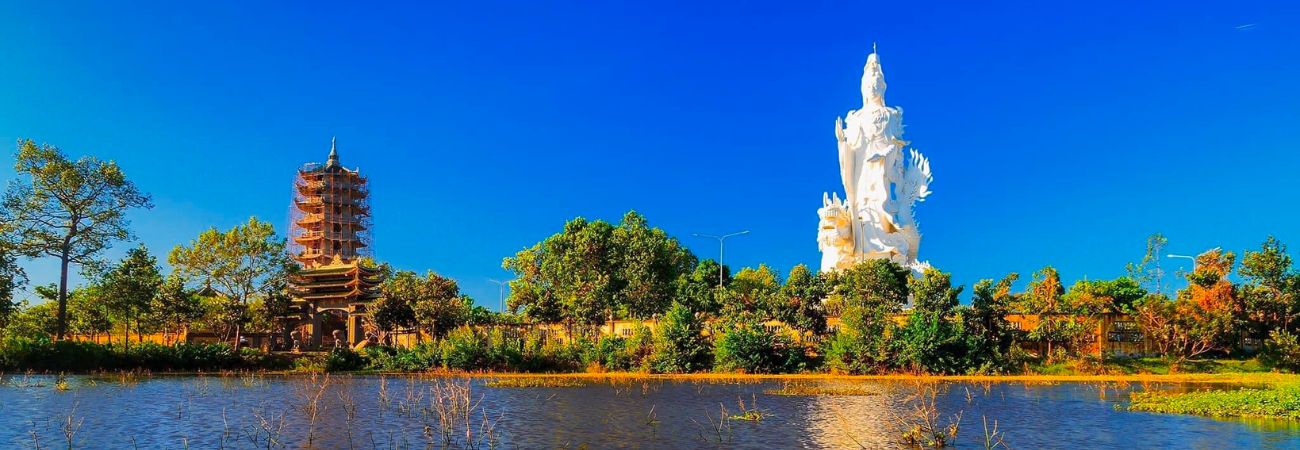
GO KEN PAGODA – ANCIENT MEDITATION OF THE SOUTHERN LAND
Page Contents
- 1 Where is Go Ken Pagoda Tay Ninh’s Address?
- 2 How to Get to Go Ken Pagoda Tay Ninh
- 3 Explaining the Name and Historical Significance of Go Ken Pagoda
- 4 What to Experience at Go Ken Pagoda Tay Ninh?
- 5 Discover Unique Architecture – Essence of Art and Spirituality
- 6 Spiritual and Cultural Activities – Experience Meaning and Peace
- 7 Suggested Attractive Tay Ninh Tourist Destinations Near Go Ken Pagoda
- 8 Tay Ninh Culinary Culture At Go Ken Pagoda
Go Ken Pagoda Tay Ninh – Sacred pagoda in the heart of Tay Ninh, famous for its unique architecture and uplifting spiritual atmosphere. Join us to explore Go Ken Pagoda and the unique spiritual experiences this place brings.
Go Ken Pagoda is an extremely impressive architectural work, combining traditional and contemporary art. Built in the typical style of Cao Dai temples, the pagoda is a place where many Buddhists and tourists gather to enjoy the sacred and peaceful space.
Where is Go Ken Pagoda Tay Ninh’s Address?
Go Ken Pagoda is located in Long Thanh Trung, Hoa Thanh, in the heart of Tay Ninh City, Vietnam. Easily navigated from the city center, the temple is an ideal spiritual destination for those seeking peace and spirituality.
See more >>>>> Link to Go Ken Pagoda Tay Ninh
How to Get to Go Ken Pagoda Tay Ninh
Do you want to explore the spiritual beauty at Go Ken Pagoda Tay Ninh and don’t know how to get here? Don’t worry, SacoTravel will guide you on the fastest and most convenient way to get to this spiritual destination.
- Passenger car service
Choose Saco Limousine to go directly from Ho Chi Minh City to the Holy See without needing a transfer. The bus picks up and drops off passengers at central locations in Ho Chi Minh City and Tay Ninh. The 9-seat Limousine is extremely spacious, has comfortable seats, and is served water and cold towels throughout the route. In addition, when paying for tickets online, you will also receive a discount code. Contact now at 1900 6027 or 0913 72 72 72.
- Private vehicles
For travelers who prefer comfort and flexibility, using personal vehicles is the best choice. Searching for Go Ken Pagoda destination on the navigation application or map, visitors will easily reach the location with the exact address.
- Public transportation
If you want to experience a unique journey, public transportation such as buses or tandem bicycles will take you close to Go Ken Pagoda from every corner of the city. Check the schedule to choose the most suitable itinerary.
- Taxi and Grab services
Explore Go Ken Pagoda without much effort by using the taxi or Grab service. Book a car from the mobile app and enjoy a comfortable and convenient trip.
Explaining the Name and Historical Significance of Go Ken Pagoda
The name “Go Ken” comes from the special height of the land where the pagoda was built. Around, cocoon trees grow strongly, creating natural beauty and a peaceful environment. Cocoon Vine, a climbing plant with ripe red fruit, offers a distinctive sweet and sour flavor that is a symbol of spirituality and connection to nature.

The name “Go Ken” is not simply a name, but also an image of a historical and cultural period. Although cocoon strings no longer grow around the pagoda today, the name still exists as a dedication to the unique cultural heritage of Tay Ninh. When you enter the sacred space of Go Ken Pagoda, remember the memories and meaning of this name. This is not only a spiritual destination, but also a journey to connect with nature and the unique cultural heritage of the homeland. Discover the profound meaning of “Go Ken Pagoda” – a place to immerse yourself in the spiritual experience and rich history of Tay Ninh.
What to Experience at Go Ken Pagoda Tay Ninh?
Discover Unique Architecture – Essence of Art and Spirituality
With unique ancient architecture and the longevity of an ancient temple in Tay Ninh, Go Ken Pagoda has become a spiritual tourist destination and a famous Buddhist – Cultural center attracting tourists from many places. Come to this land of Tay Ninh. The entire temple complex is a harmonious architectural combination between Eastern and Western cultures, half ancient and half modern.
When entering the temple yard, the most prominent thing is the Shakyamuni Buddha statue built in 2009 sitting under a lush Bodhi tree with a wide, shady canopy. The highlight is the statue of Avalokiteśvara Bodhisattva with a height of 25m standing above a 7m high dragon, along with many stupas of the temple’s presiding officers over many generations such as the stupa of Yet Ma Tri Luong, the stupa of the monk. Tu Phong and the tower of Monk Thuan Hoa.
 tuong-phat-thic-ca-mau-ni |


The architecture of this hundred-year-old pagoda is similar to Giac Hai Pagoda (according to the drawing of architect Hoc Dinh), the solid high foundation surrounding the foundation is paved with embankment stones, and each stone slab is about 1m long and 2cm high. With a length of 30m and a width of 15m, it is designed with 2 roofs made of hooked tiles. The pagoda consists of 6 compartments and 2 wings, the wings are distributed according to the Dong lang and Tay lang model. The walls are built of blue ceramic tiles, the walls are covered with mortar. Inside there are 2 long rows of columns, each row has 6 columns divided into 3 compartments. The truss columns are cast with very solid reinforced cement. The door is dome-shaped and fitted with square wooden bars like in ancient times, with a tongue installed on top so that it cannot be lifted out, and opens at the gable wall. The pagoda’s ancestral house has the same architecture as the Dinh-shaped house and is horizontal to the main hall.
- Presbytery
In the main hall of the pagoda, there are 14 altars made of rosewood or rosewood. The Buddha altar is up to 3m high, enshrining the statues of Buddha Amitabha, Avalokiteshvara, The Chi, Shakyamuni, Ananda, and Kasyapa. On both sides of the wall, each side of the wall has 4 altars worshiping the statues of the Eighteen Arhats, Dat Ma, Ksitigarbha, etc. There are altars for Tieu Dien Dai Dai, Ho Phap, Gia Lam, Ngoc Hoang, Nam Tao, and Bac Dau. There are a total of 53 Buddha statues carved in wood, 2 statues cast in bronze and 18 Arhat statues skillfully made of cement. At Go Ken Pagoda, ancient worship tools such as thunder drums and giant bells, over half a century old, were cast in 1925 and worshiped by female devotee Huynh Thi Nguyet and people from Trung Tin village, Vung Liem district. Behind the Buddha hall is the Patriarch altar, on which are displayed the spiritual relics of four monks: Tien Giac, the 37th generation of the Lam Te main lineage, Thich Tri Luong, the 38th generation, Thich Tu Phong, the 39th generation, and Thich Thuan Hoa, the 40th generation.

- Ancestral Church
The Patriarch’s worship space is a guest house built on a lower foundation than the main hall. This place holds tables, chairs, and 2 bookcases left by Monk Thich Tu Phong. In it, there are Buddhist scriptures, some documents, and his writings. In particular, there is a book handwritten in Nom in the six-eight style about Buddhism. The book is over 1,000 sentences long, but the cover is lost so the title is unknown. In addition, he also composed a 118-page book called Phat Bo De Tam Van Nghia which was printed in Tay Ninh. In addition to the main temple, around the pagoda, there are also many unique works such as Tam Quan gate, Lumbini garden, Ngu Hanh Son mountain, 9-storey Xa Loi Stupa, Maitreya Buddha shrine,… and many Buddha statues. Wood has spiritual value. Although it is a pagoda, it has a bit of a church style. Along with the unique architecture and the spaciousness of the temple grounds, this is an attractive point of an ancient temple in Tay Ninh.
Spiritual and Cultural Activities – Experience Meaning and Peace
Go Ken Pagoda has a history of more than a century and is a place associated with the development of the Cao Dai religion. This is an important place for religious festivals and spiritual activities and is a meeting place for Cao Dai followers across the country. The pagoda is not only a spiritual attraction but also a place to organize many profound activities, attracting tourists and Buddhists. Explore the spiritual and cultural experiences at Go Ken Pagoda through the special activities below.
- Spiritual Festival
The Avalokiteshvara Ceremony at Go Ken Pagoda is an opportunity to honor and show respect to Buddha Avalokiteshvara, the compassionate Bodhisattva who brings help and kindness to all souls. The ceremony often takes place on important occasions, such as the 19th day of the second lunar month (the special holiday of Buddha Avalokiteśvara). In a solemn and sacred atmosphere, Buddhists and religious friends gather to pray and listen to sermons on compassion and kindness.
After the funeral ceremony, the flower lantern release activity is held as a special spiritual ritual. This is an opportunity for everyone to show their respect and admiration, and a way to pray for peace and happiness for their family and the world. Lanterns, with bright lights and colors, are released into the sky with the hope that good things will come to everyone.

- Retreats and Theoretical Studies
Go Ken Pagoda is also an ideal place for those who want to deeply learn about the philosophy and history of the Cao Dai religion. Retreats and theory sessions are held regularly, providing opportunities for learning and discussion for those interested in spirituality.
- Volunteer Activities
Go Ken Pagoda often supports and organizes volunteer activities to contribute to the surrounding community. Visitors can participate in these activities to spread love and kindness, creating a meaningful and memorable experience.
- Discussion and Learning
This place is not only a spiritual spot but also a space for discussion and learning. Discussions on philosophy, ethics, and spiritual teachings provide insight into the soul and humanity.
- Cultural Tourism
Go Ken Pagoda is an ideal stop on cultural tours. Visitors can explore not only the architectural beauty but also the rich history and culture of this location.
Suggested Attractive Tay Ninh Tourist Destinations Near Go Ken Pagoda
If you are planning to add other interesting destinations to your journey, there are important places near Go Ken Pagoda such as:
Ba Den Mountain: A mysterious paradise in the arms of Vietnam with majestic mountain peaks and mysterious scenery, it is a sacred place that takes visitors into a world of legends and wonderful beauty. A must-see destination for those wanting to explore the region’s unique culture and history.
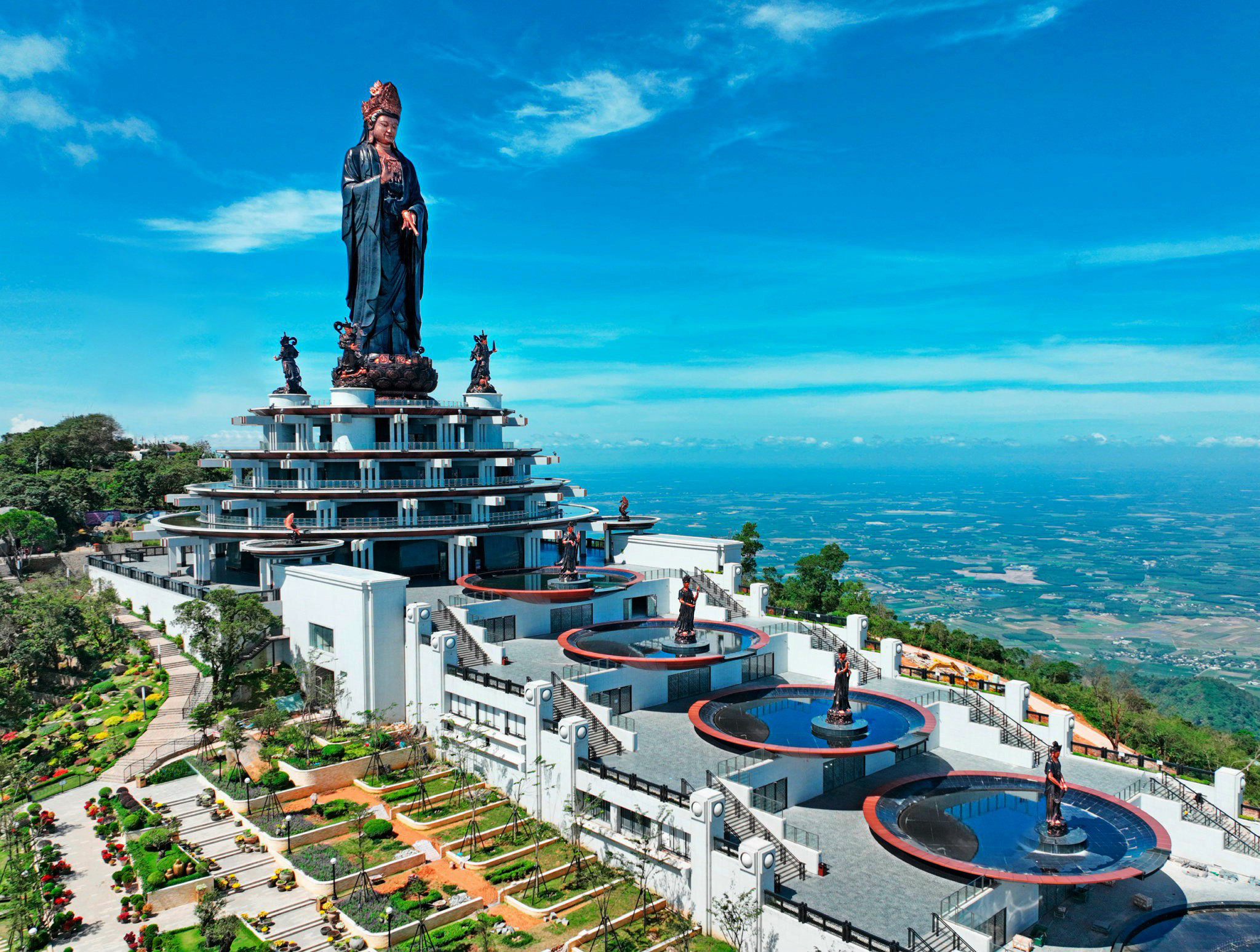
Tay Ninh Holy See: As the headquarters of the Cao Dai religion, Tay Ninh Holy See is a destination not to be missed. Visitors can visit, learn about the Cao Dai religion, and enjoy the impressive architecture of the holy building.

Dau Tieng Lake: If you want to enjoy fresh air and natural beauty, Dau Tieng Lake is the ideal choice. You can relax, fish, or participate in other nautical activities.

Tay Ninh Culinary Culture At Go Ken Pagoda
When you set foot at Go Ken Pagoda, it is not only a spiritual journey but also an opportunity to explore the unique culinary culture of Tay Ninh. Experiencing exquisite and unique flavors, from traditional specialties to unique culinary variations, is an important part of the travel journey.
You can enjoy popular dishes such as mixed rice paper, with a delicate combination of rice paper, spices, and fresh ingredients, creating a unique and interesting flavor. Trang Bang Banh Canh, a famous traditional dish, will make your culinary experience rich and attractive.
In particular, don’t miss the opportunity to enjoy Tay Ninh shrimp salt, a pure salt specially produced from local salt water. The unique flavor and excellent quality of this shrimp salt will captivate any gourmet.

Let Tay Ninh’s culinary culture enrich your journey, where every meal is a unique and culturally rich culinary journey.
Go Ken Pagoda Tay Ninh is not only an important spiritual site but also a prominent cultural symbol of Vietnam. Visiting Go Ken Pagoda, visitors not only experience immersion in the sacred space but also have the opportunity to better understand the country’s unique history and spiritual culture.



